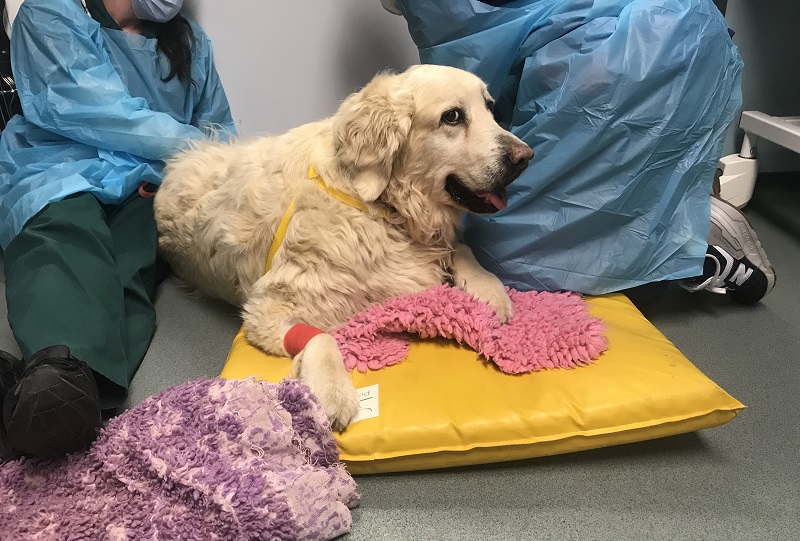Creating a Dedicated Chemotherapy Administration Room
Clinical Connections – Spring 2022
We are in the process of developing a chemotherapy administration treatment room at the Queen Mother Hospital for Animals (QMHA). A dedicated space for animals receiving chemotherapy will benefit both our oncology clients and some pets who receive chemotherapy treatment managed by the Neurology and Neurosurgery Service.
The chemotherapy administration room will be a space where patients can receive their treatment from our dedicated oncology vets and veterinary nurses in a quiet and comfortable room with no disturbances.
Both the Oncology and Neurology and Neurosurgery Services have grown exponentially over the years and the new development will allow precious space to be used as efficiently as possible.
The development will allow us to compassionately provide the best possible experience for our patients, whose welfare is paramount. In addition to creating a relaxed environment for patients and promoting peace of mind for clients, the development will create a safe place for clinical staff handling the patients and chemotherapy agents.
In most chemotherapy cases seen at RVC Small Animal Referrals, treatment is palliative and so the team is generally dealing with older pets where the emphasis is on making them feel better and extending their lives for as long as it can be considered a good quality of life.
This upgraded area of the hospital will centre on patient comfort and enrichment. It will incorporate a low-lift table, mattresses, and soft hygienic bedding, alongside the specialist medical equipment necessary for these animals’ individualised treatments.
The enhanced facilities will make it easier for members of the clinical team, including students, to observe the process of safely administering chemotherapy and learn how to monitor vital signs during administration.

Commenting on the development and outlining benefits for patients, clients and veterinary training, Head of the Oncology Service Sandra Guillen said: “Dogs and cats diagnosed with cancer may need to come regularly to the hospital to receive oncological treatment, and for us it’s of great importance to create a warm and pleasant atmosphere for our patients, so they see us as a friend rather than a doctor. In addition to having a caring and friendly team of nurses and vets, the environment plays an essential role. The new chemotherapy room will be carefully designed to provide a comfortable and relaxed environment for dogs and cats receiving chemotherapy treatment but will also ensure efficient patient and staff flows. This extra space will benefit the students rotating though oncology, as it will allow them to monitor and follow their patient’s treatments more closely.”
She added: “Our oncology service is rapidly expanding and with the addition of new team members together with this space we hope to be able to reduce the waiting times for our patients at the start and during treatment.”
Lisa Lines, the QMHA Operations Director, said: “This is a super exciting project for the QMHA, we strive to deliver best patient care. Space is precious, and I am pleased we have managed to repurpose a room close to the oncology ward, where we can dedicate an environment away from the ward where animals can have some rest and receive their treatment with plenty of one-on-one time with the nurses, vets and students.
“Safety is paramount, the restricted area will offer a safe place to deliver the chemotherapy administration and increase operational efficiency in the services, supporting clients and reducing our waiting times. There is nothing more rewarding than seeing the team so passionate about what they do, and this project really will mean so much to them and all the animals coming through the door.”
It is intended that the chemotherapy administration room will be completed and ready for patient use this year. The development is being funded by an Animal Care Trust grant. The registered charity of the RVC aims to improve animal health and care through clinical practice, education, and pioneering research.
